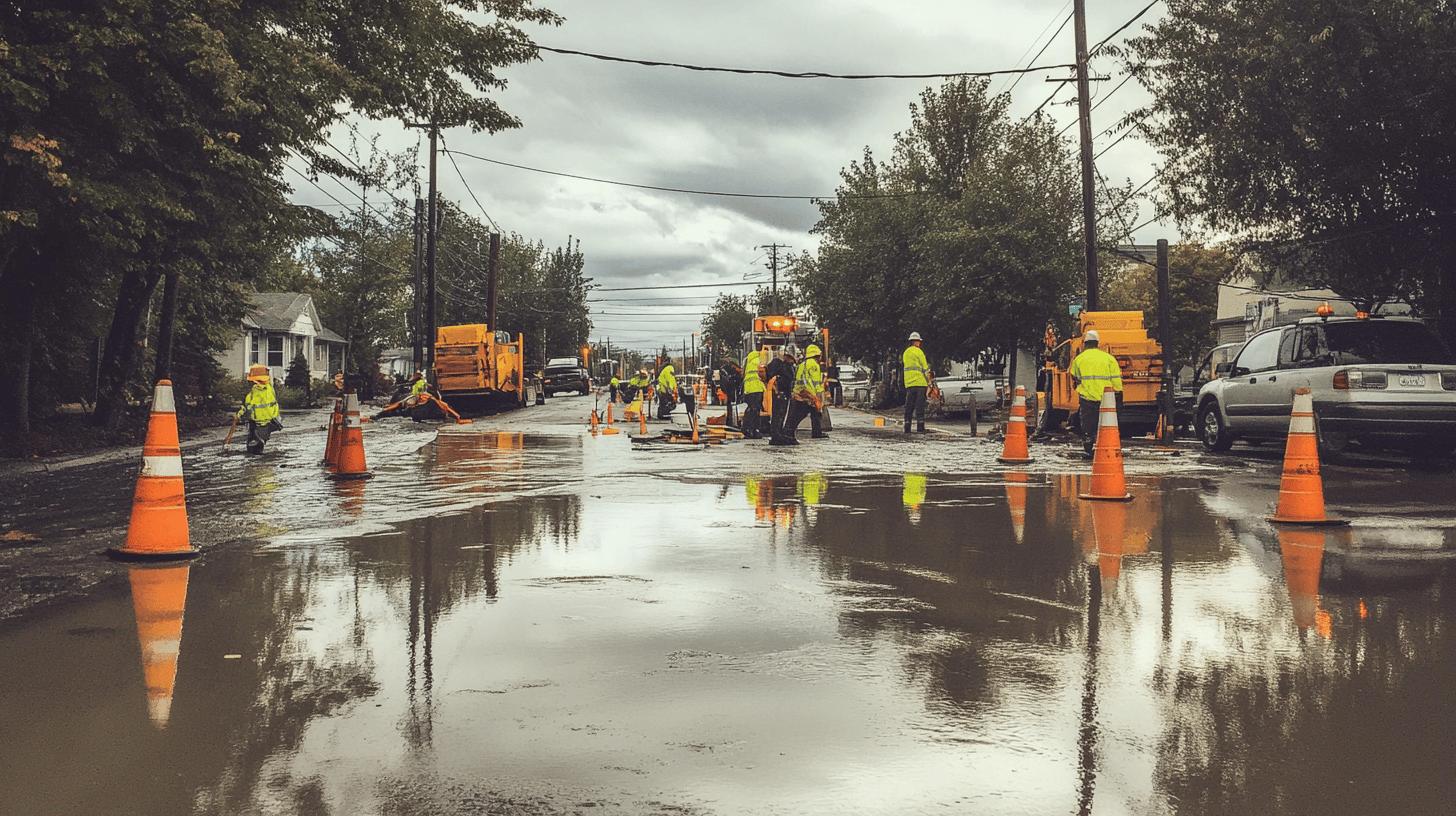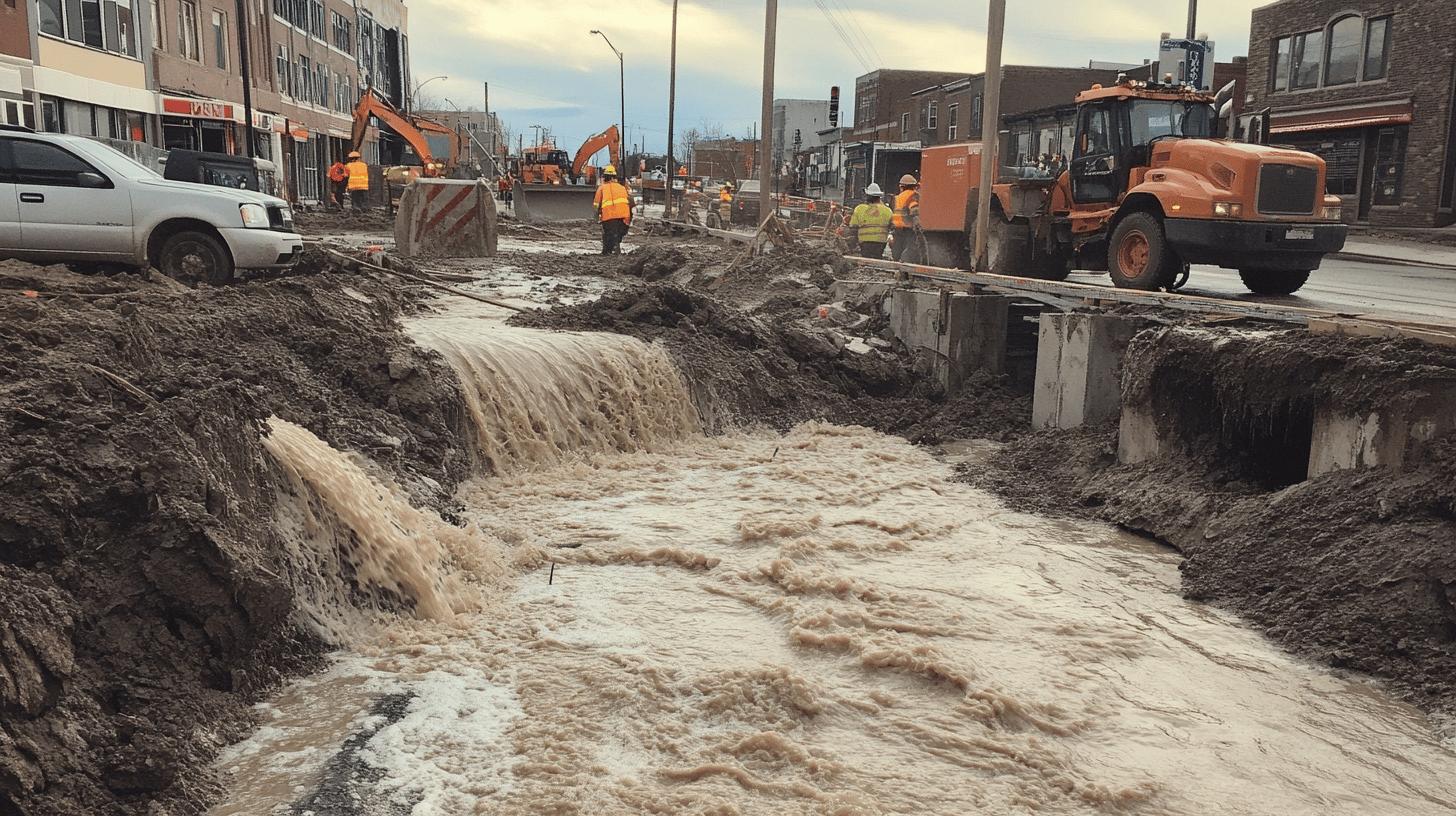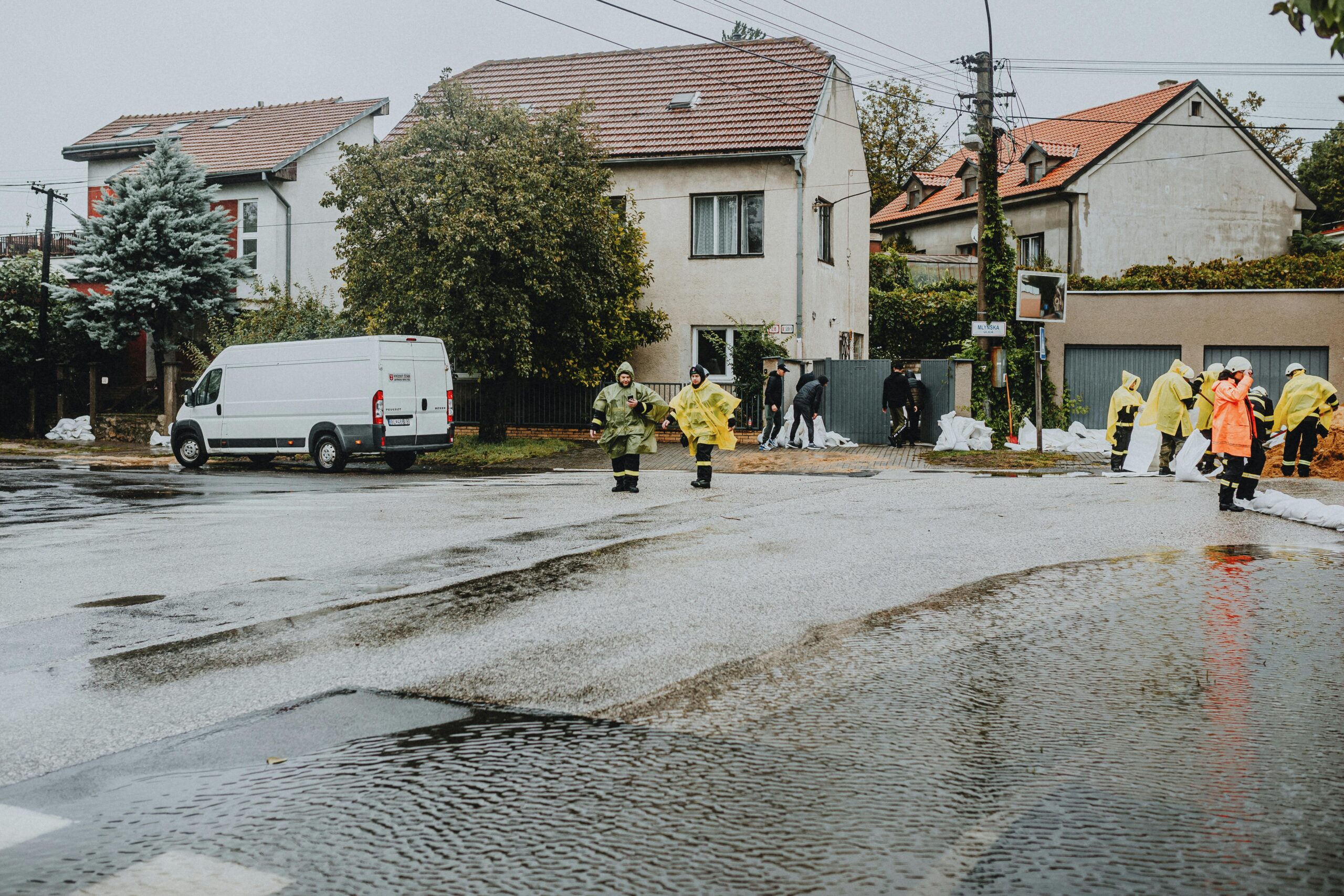TL;DR:
- Water main breaks result from aging infrastructure, extreme weather, ground movement, and construction.
- Impacts include water outages, flooding, traffic disruptions, and economic losses.
- Recent incidents:
- Atlanta: Widespread outages; under repair.
- San Francisco: Traffic delays; repaired.
- West Hollywood: Business closures; under repair.
- During a break, shut off your water, avoid using tap water, and report the issue to local services.
- Repair process includes identifying breaks, shutting off water, excavation, and repairing pipes, affected by break severity and urban complexity.
- Preventive measures: Regular maintenance, infrastructure upgrades, use of corrosion-resistant materials, and smart monitoring technologies.
Ever thought about how a tiny crack in an underground pipe can mess up an entire city? A water main break isn’t just a plumbing problem—it’s a huge hassle for the whole community. In this article, we’ll break down what causes these issues, how they affect neighborhoods right away, and even look at how they mess up things like traffic. Keep reading to see how these small problems can cause big headaches in daily life.
Understanding Water Main Breaks: Causes and Impacts
Water main breaks happen when major pipes burst, wasting a ton of water. Old pipes are a big reason for this since they wear out and become more likely to fail. Extreme weather, like freezing and thawing, can also weaken them. Ground movement, from natural shifts or construction, can put even more stress on the pipes.
When a break happens, it seriously messes up water supply and services. You might notice lower water pressure or no water at all. Depending on how bad the break is, it can take hours or even days to fix. Flooding is also a big issue, damaging roads, homes, and businesses, and making the area unsafe to be around until it’s fixed.
On top of that, water main breaks cause traffic problems. Flooded roads can be blocked off, leading to delays and detours, which is a real headache for people trying to get around, especially in busy cities.
Common Causes of Water Main Breaks:
- Aging infrastructure
- Extreme weather conditions
- Ground movement
- Construction activity
- Pipe corrosion
Recent Water Main Break Incidents and Updates

Recent water main breaks have caused major problems in different cities. In Atlanta, a break left a lot of homes and businesses without water, forcing many businesses to temporarily shut down. In San Francisco, a similar break messed up traffic, closing roads and making commutes difficult.
In West Hollywood, a break at Santa Monica Boulevard and La Cienega Boulevard caused a mess. Nearby businesses had to close, losing money, and traffic was a nightmare with detours and roadblocks slowing everyone down. Local authorities are working quickly to fix the problem and get things back to normal.
| Location | Impact | Status |
|---|---|---|
| Atlanta | Widespread water outages, business closures | Under repair |
| San Francisco | Traffic delays, road closures | Repaired |
| West Hollywood | Business closures, traffic disruptions | Under repair |
How to Respond During a Water Main Break
If a water main breaks, first shut off your water to avoid damage and water waste. Don’t use tap water for drinking, cooking, or cleaning until it’s confirmed safe. Contaminated water can be dangerous, so always follow boil water advisories from the authorities.
Report the break right away to your local utility service. Most cities have an emergency hotline or online system for this. Give them detailed info about the location and impact to help crews fix it faster. Keep their contact info handy for quick reporting and repair updates.
Emergency Preparedness Tips:
During a break, follow these tips to stay safe:
- Store enough bottled water for drinking and sanitation.
- Avoid flooded areas to prevent accidents and contamination.
- Follow all boil water advisories.
- Stay informed through local news and utility updates.
These steps can help you minimize impacts on daily life.
Repairing Water Main Breaks: Process and Timeline

Fixing a water main break involves a few steps to get things back to normal quickly. First, utility workers find where the break is and how bad it is. Then, they shut off the water to stop more damage. After that, they dig to reach the broken pipe, which can be tough in cities with lots of underground systems. Once they reach the pipe, they either repair or replace it, depending on the damage.
Several things affect how long and how much the repair will cost. The worse the damage, the more time and resources it takes. Location matters too—urban areas can be harder to work in because of complex systems and the need to avoid major disruptions. Bad weather can also slow things down. All of this can impact the repair costs since bigger breaks need more labor, materials, and time.
Key Steps in the Water Main Repair Process:
- Identifying the break location
- Shutting off water supply
- Excavating the damaged area
- Replacing or repairing the pipe
Preventive Measures and Long-Term Solutions for Water Main Breaks
Regular maintenance and monitoring can help prevent water main breaks. Keeping an eye on aging pipes allows for repairs or replacements before things go wrong. It’s also important to track weather and ground movements since extreme conditions or construction can damage pipes. By watching these factors, utility services can fix problems before they get worse.
Upgrading old infrastructure is key to avoiding breaks in the long run. Many systems are outdated and not built for modern needs. Using new materials and technology makes pipes stronger and more reliable. Replacing old, corroded pipes with ones that resist corrosion helps them last longer. Smart tech that monitors pipes in real time and detects leaks early can also speed up repairs.
Long-Term Solutions for Water Infrastructure Resilience:
- Regular infrastructure upgrades
- Use of corrosion-resistant materials
- Implementation of smart monitoring technologies
Final Words
Water main breaks cause major problems due to old pipes, bad weather, and ground movement. They can result in flooding, low water pressure, and traffic jams.
Recent breaks in cities like Atlanta and San Francisco show just how disruptive these events can be, stressing the need for quick responses and preparation.
Knowing what to do during an emergency and understanding the repair process can help reduce the hassle and damage from water main breaks. Taking steps to prevent these breaks and upgrading old systems will help keep the water supply steady and the community safe.
FAQ
What does a main water break mean?
A main water break means a rupture in a primary pipeline, leading to significant water loss and potential disruptions in water supply and infrastructure.
Is it safe to shower during a water main break?
It is not recommended to shower during a water main break due to potential contamination. Wait for advisories from local utilities for safety information.
Can you use the toilet during a water main break?
You can use the toilet during a water main break if the water is still running. However, you may experience reduced water pressure or no water at all.
Is it safe to drink water after a water main break?
Wait for local authorities to inform whether the water is safe to drink after a water main break. Often, a boil water advisory may be issued.
Who is responsible for a water main break?
Responsibility for a water main break typically lies with the local utility company or municipality, which handles the repairs and maintenance of public water lines.
How can I find information about water main breaks near me?
To find information about water main breaks near you, check local news updates, utility company websites, or official social media channels for real-time information.
What are the common causes of water main breaks?
Common causes of water main breaks include aging infrastructure, extreme weather conditions, ground movement, high water pressure, and construction accidents.

